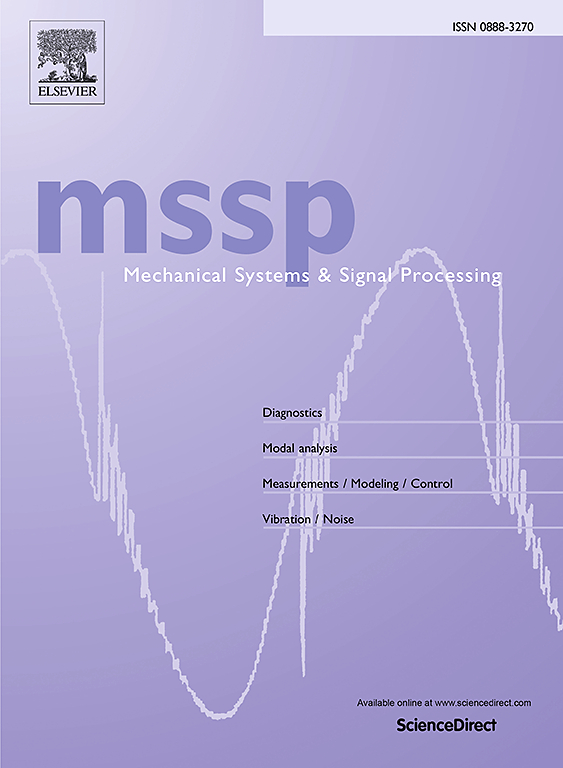A novel dynamic load identification method with unknown load locations using modal force reconstruction and iterative optimization
IF 7.9
1区 工程技术
Q1 ENGINEERING, MECHANICAL
引用次数: 0
Abstract
Accurately determining the location and magnitude of dynamic loads on a structure is crucial for solving or optimizing vibration issues. However, identifying the source of vibration through direct measurement is extremely challenging. Therefore, developing a rapid and accurate method for dynamic load location identification is essential. However, achieving rapid localization of multi-point excitation in continuous systems has been challenging due to the coupling relationship of their contributions to the response. This paper presents a novel method that can simultaneously identify the location and magnitude of dynamic loads acting on the structure under multi-point excitation. A “Modal-based Dynamic Load Location Identification” framework is proposed, analyzing the influence of dynamic load locations on the structural dynamic response. The relationship between system acceleration response and modal loads is constructed using numerical integration through the Newmark explicit method, thereby determining the modal loads of various orders in the vibration system. By converting the relationship between physical space loads and modal loads, a modal load residual fitness function is established. The fitness function is iteratively optimized using genetic algorithm to determine the load location, achieving rapid localization of dynamic loads under multi-point excitation. Subsequently, the computational efficiency of dynamic load identification is analyzed. Simulation results indicate that this method reduces the identification time of dynamic loads under the condition of unknown load locations to the same order of magnitude as when the load location is known, significantly improving the computational efficiency of load location identification. Moreover, it can be effectively applied to various types of load conditions, demonstrating high accuracy and excellent robustness to noise. To further verify the performance of the algorithm in practical engineering, experimental studies on dynamic load identification were conducted on a simply supported beam system, and the results confirm that the algorithm is effective. Additionally, the influence of measurement locations and Newmark parameters on the identification accuracy is discussed.
求助全文
约1分钟内获得全文
求助全文
来源期刊

Mechanical Systems and Signal Processing
工程技术-工程:机械
CiteScore
14.80
自引率
13.10%
发文量
1183
审稿时长
5.4 months
期刊介绍:
Journal Name: Mechanical Systems and Signal Processing (MSSP)
Interdisciplinary Focus:
Mechanical, Aerospace, and Civil Engineering
Purpose:Reporting scientific advancements of the highest quality
Arising from new techniques in sensing, instrumentation, signal processing, modelling, and control of dynamic systems
 求助内容:
求助内容: 应助结果提醒方式:
应助结果提醒方式:


